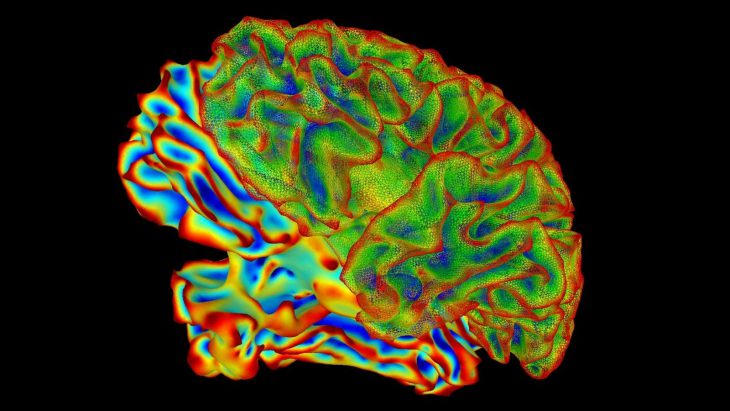The human brain consists of 86 billion neurons and just as many glial cells. Glial cells provide neurons with support and protection. The neurons in your brain are cells that act like train stations. Likewise, tiny gaps called synapses are like the railways for information to pass from one station (neuron) to the next. This information transfer allows you to feel the sun on your skin, plan your trip to the store, and get scared when Jack breaks down the bathroom door in the movie The Shining (1980). Unfortunately, there’s something much scarier than Jack Nicholson: brain tumors.
Brain tumors come in many forms. One brain tumor type, gliomas, begin in glial cells. A glioblastoma is the nastiest version of a glioma because it spreads through your brain very quickly and often causes patients’ neurons to fire (dispatch many trains) in rapid bursts resulting in epileptic seizures. Because of the fast pace and deadly consequences, glioblastomas require surgery followed by chemotherapy and radiation. This treatment is physically and mentally taxing, but necessary to achieve the best outcomes for the patient. Fortunately, dedicated scientists are researching glioblastomas so treatments can be designed to be more effective, easier on the patient, and cheaper so people don’t break the bank trying to stay alive.
Recently, a research team based in Germany looked at glioblastoma tissue through their microscope and noticed something strange. They observed long, skinny tubes called tumor microtubes that connected the glioblastomas to neurons. These microtubes also protected the glioblastomas from the effects of surgeries and chemotherapy. To confirm their finding, the researchers used a set of staining methods, similar to how you stain wood to bring out the pattern of the grain. These stains allowed the researchers to look closer at these tumor microtubes and confirm the existence of these connections, called neurogliomal synapses. These synapses are like special railways that connect neurons with gliomas.
This revelation enticed the research team to perform a thorough check for neurogliomal synapses in all of the different types of gliomas. After further examination, the researchers came to some remarkable conclusions. First, the thorough check revealed that these neurogliomal synapses were always found in glioblastomas, but rarely in less severe types of glioma. Second, the synapses themselves only transmit information from the neuron to the glioblastoma and never the other way around. Additionally, the synapses used a specific messenger molecule called glutamate to communicate.
The discoveries made by this German research team showed that epileptic seizures caused by glioblastoma also accelerate the growth of the glioblastoma. This feedback loop creates a dangerous downward spiral of patient health. Luckily, the discovery that these neurogliomal synapses use glutamate to communicate provides a new treatment target. There are already drugs available that can regulate communication between neurons, which could reduce the damage this loop causes. Moving forward, dedicated scientists around the world will conduct preclinical studies and eventually clinical trials to find a treatment plan that can help alongside current methods.


